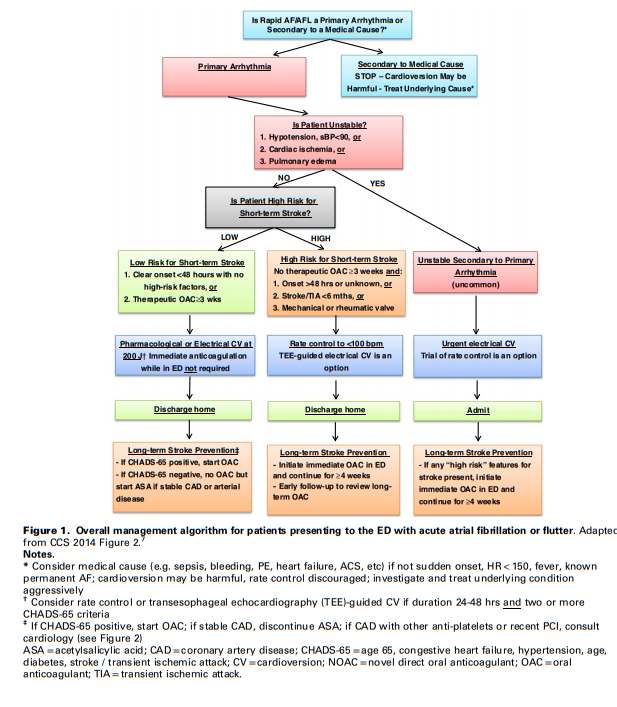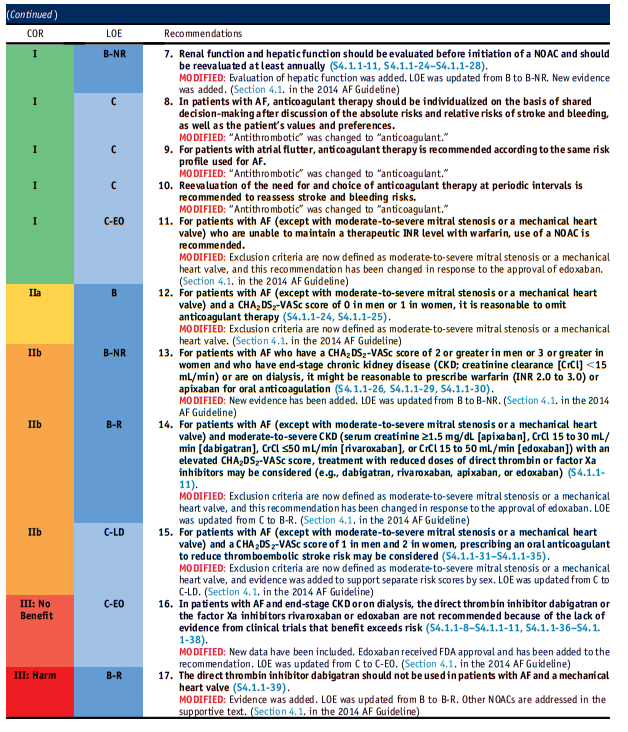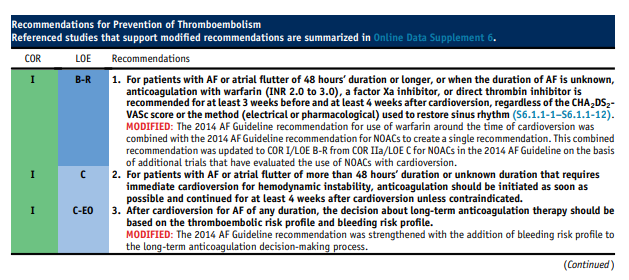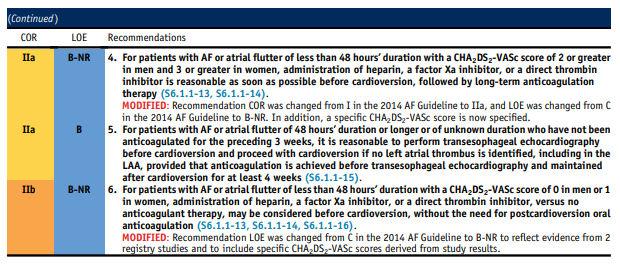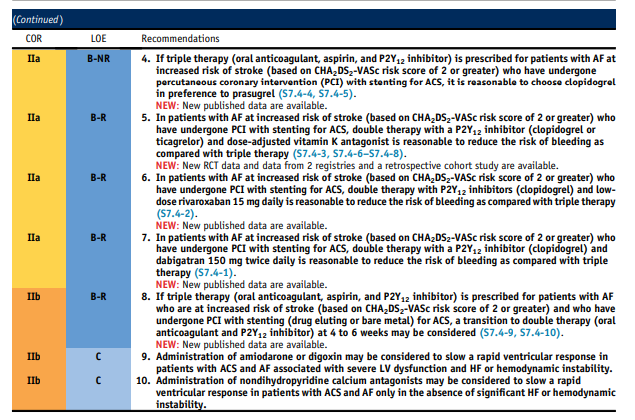Note to myself: Be sure and go over Review Of Resources And Guidelines On The Management Of Atrial Fibrillation. Posted on January 18, 2020 by Tom Wade MD. The post doesn’t take long to review and it complements the material in this post.
In this post, I link to and excerpt from CAEP Acute Atrial Fibrillation/Flutter Best Practices Checklist [Full Text PDF]. CJEM 2018;20(3):334-342.
In addition, I have linked to and excerpted from the 2019 AHA/ACC/HRS focused update of the 2014 AHA/ACC/HRS guideline for the management of patients with atrial fibrillation. 2019 Jan 28. [PubMed Abstract] [Full Text HTML] [Full Text PDF].
Here are excerpts from CAEP Acute Atrial Fibrillation/Flutter Best Practices Checklist [Full Text PDF]. CJEM 2018;20(3):334-342:
The CAEP Acute Atrial Fibrillation/Flutter Best Practices
Checklist was created to assist emergency physicians in
Canada and elsewhere manage patients who present to
the emergency department (ED) with acute/recent onset atrial fibrillation or flutter. The checklist focuses on symptomatic patients with acute atrial fibrillation (AAF) or flutter (AAFL), i.e. those with recent-onset episodes (either first detected, recurrent paroxysmal or recurrent persistent episodes) where the onset is generally less than 48 hours but may be as much as
seven days. These are the most common acute arrhythmia cases requiring care in the ED.1,2
Carefully review the chart below, as it contains the summary of the checklist:
The Guidelines are subsequently divided into three sections:
A. Assessment and Risk Stratification p. 338
[Carefully review p. 338 for the answers to the questions on Assessment and Risk Stratification. Also in the flow chart above.]
B. Rhythm and Rate Control pp. 339 + 340
[Carefully review pp. 339 + 340 to determine the answers to the critical questions below]
1) Unstable due to Primary Arrhythmia
2a) Stable Low-Risk for Short-term Stroke
2b) Stable High-Risk for Short-term Stroke
3a) Rhythm Control
[This section of the guideline has details of pharmacologic cardioversion and electrical cardioversion.]
3b) Rate Control
[This section has details on pharmacologic treatment, both IV and po, for rate control.]
4) Rapid Ventricular Pre-Excitation (WPW)
[The treatment of this problem is urgent cardioversion. If the patient is stable IV procaineamide can be considered.]
AV nodal blocking agents contraindicated: digoxin, calcium channel blockers, beta-blockers,
adenosine, amiodaroneC. Long-term Stroke Prevention pp. 341 + 342
[There are detailed recommendations in this section but I will be following the 2019 Focused Update On AF referenced and excerpted below.]
D. Disposition and Follow-up p. 342
[Again, there are detailed recommendations in this section but I will be following the 2019 Focused Update On AF referenced and excerpted below.]
Here are excerpts from 2019 AHA/ACC/HRS focused update of the 2014 AHA/ACC/HRS guideline for the management of patients with atrial fibrillation. 2019 Jan 28. [PubMed Abstract] [Full Text HTML] [Full Text PDF]:
4. Prevention of Thromboembolism
4.1. Risk-Based Anticoagulant Therapy (Modified
From Section 4.1., “Risk-Based Antithrombotic
Therapy,” in the 2014 AF Guideline)
4.1.1. Selecting an Anticoagulant Regimen—Balancing Risks
and Benefits (Modified From Section 4.1.1., “Selecting an
Antithrombotic Regimen—Balancing Risks and Benefits,”
in the 2014 AF Guideline)
4.3. Interruption and Bridging Anticoagulation
4.4. Nonpharmacological Stroke Prevention
4.4.1. Percutaneous Approaches to Occlude the LAA
4.4.2. Cardiac Surgery—LAA Occlusion/Excision
6. Rhythm Control
6.1. Electrical and Pharmacological Cardioversion
of AF and Atrial Flutter
6.1.1. Prevention of Thromboembolism
6.3. AF Catheter Ablation to Maintain Sinus
Rhythm
6.3.4. Catheter Ablation in HF
7.4. AF Complicating ACS
7.12. Device Detection of AF and Atrial Flutter
(New)

